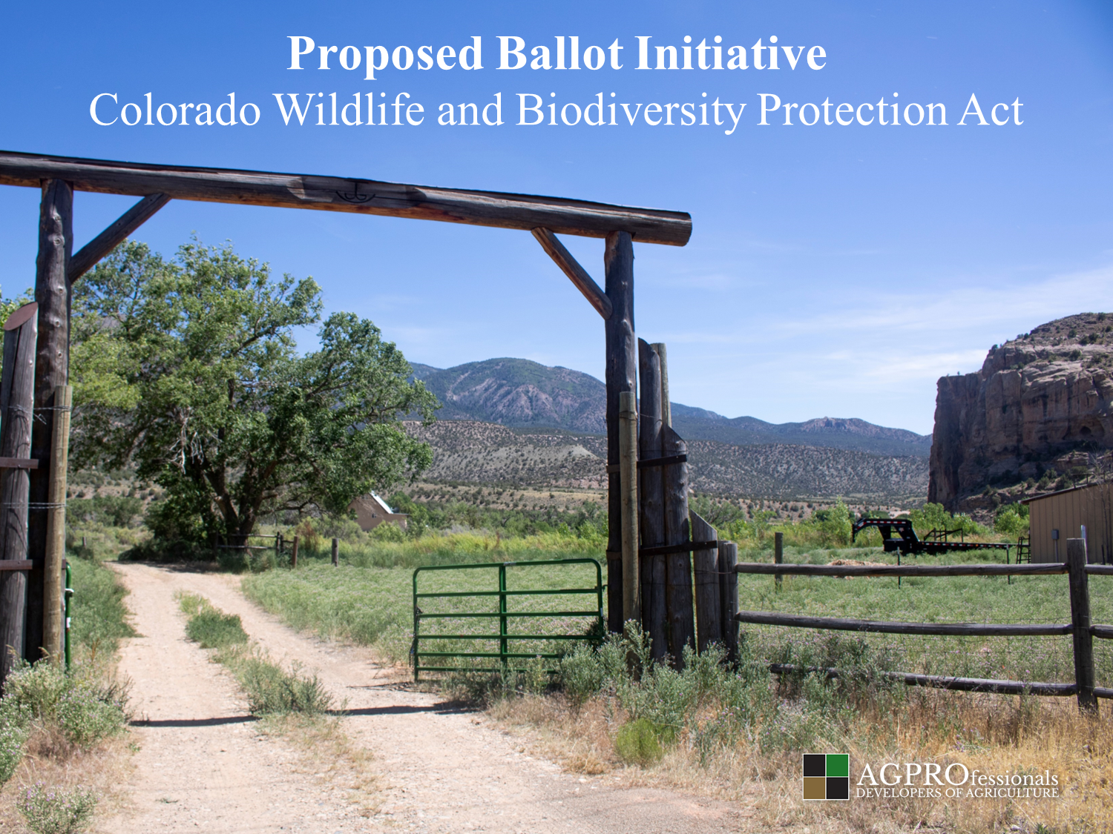
The Colorado Wildlife and Biodiversity Protection Act
What It Means for Livestock Producers and Landowners
By Thomas Haren, CEO and Founder, AGPROfessionals
On April 18, 2025, the Colorado Legislative Council staff received language for a proposed ballot measure—the Colorado Wildlife and Biodiversity Protection Act—that poses serious concerns for livestock producers and landowners. Assigned #2025-2026 #82, it is pending review and a comment hearing.
Colorado farmers and ranchers have always been stewards of the land. But under the banner of “wildlife conservation,” this proposal threatens property rights, agricultural livelihoods, and the future of production agriculture in our state. Here’s what YOU need to know.
A New Unelected Commission with Expansive Power
The proposal would create the Wildlife and Ecosystem Conservation Commission (WECC)—a powerful nine-member body appointed by universities, environmental groups, and policy institutes. No member could have financial ties to agriculture, energy, or development, effectively excluding those who work the land from decision-making about it.
The WECC would have enforcement authority, including property inspections, investigations, subpoenas, and referrals for prosecution. It could:
- Designate state-listed endangered species.
- Require mitigation for projects affecting wildlife or corridors.
- Develop conservation programs for private landowners.
- Issue investigative subpoenas and conduct site inspections.
Wildlife Corridors: Voluntary in Name Only
The Act calls for a statewide Wildlife Corridor Network, framed as voluntary but layered with control. Participants would need WECC-approved conservation plans to continue agricultural use, submit to annual compliance checks, and follow any new rules—including land-use limits and fencing restrictions. Grazing and other traditional uses could be deemed “incompatible” unless meeting WECC’s standards.
Infrastructure Restrictions
Projects crossing or near wildlife corridors—roads, pipelines, transmission lines, or developments—would require overpasses, underpasses, fencing, and buffer zones. Even with local approval, WECC could block or delay projects unless costly mitigation plans win its approval.
A Self-Funding Bureaucracy
WECC’s funding model creates a built-in conflict of interest:
- 20% of fines go to its operating budget.
- 30% is earmarked for land acquisition.
- Impact fees (minimum 0.5% of project cost) apply to projects over 50 acres or near corridors.
These fees could be raised at any time based on vague criteria, with all payments due before construction begins—potentially stalling rural development.
Public-Private Partnerships with Hidden Agendas
The Act authorizes partnerships with nonprofits aligned with its goals, opening the door for groups promoting rewilding, predator reintroduction, and anti-animal agriculture policies to influence regulations and receive taxpayer-supported funding.
The Bigger Picture
The proposed Colorado Wildlife and Biodiversity Protection Act may sound noble, but dig a little deeper, and it becomes clear that it is about ideology, control, and political agendas pushed by fringe groups far removed from the realities of rural life.
Presented as “conservation”, this proposal represents a major shift in land governance—removing decision-making from local control, sidelining agricultural voices, and concentrating power in an unelected, ideologically driven commission. It’s part of a broader push to use ballot measures to impose sweeping environmental policies on rural Colorado without the consent of those most affected.
For landowners, farmers, and ranchers, the time to get informed is now.
Links:
